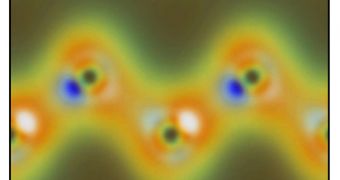A group of physicists from the US Department of Energy's (DOE) Lawrence Berkeley National Laboratory (Berkeley Lab), in California, announces the creation of a special, synchronized laser, which was used to reveal how light beams shape matter at the atomic scale.
Not many people are familiar with the exact extent to which light is capable of influencing the world around us. Partially responsible for this state of affairs is the fact that researchers never had any means of investigating how photons influence atoms, until now.
In order to figure this out, Berkeley Lab scientists devised a way of combining a pulse of extremely bright X-rays with a beam of optical light produced by a regular laser. Details of how they did this were published in the August 30 issue of the top scientific journal Nature.
The research was conducted at the SLAC National Accelerator Laboratory's Linac Coherent Light Source (LCLS). Berkeley Lab scientists Thornton Glover was the leader of the experiments, and also of the international team that was involved in the project.
His team aimed the mix of light pulses the LCLS produced at a diamond sample, thus producing the first-ever measurements of how light changes and shapes the chemical bonds inside a crystal. The observations were extremely precise, at atom-scale resolution.
Light is extremely important for nature and everything in it. For example, we see because proteins in our eyes experience changes triggered by photons. Sunlight can split water into its basic parts, hydrogen and oxygen, both of which are extremely important on their own.
Without photons, photosynthesis would not occur. All plant life would vanish, followed swiftly by all carnivores. Only some fish and microorganisms could survived, but not as we know them today.
In modern technologies, such as solar panels, light is used to move electrons about in semiconducting materials. This is what enables one of the aforementioned panels to produce electricity.
The fact that all of this is happening in a mysterious way has been a long-time source of frustration for optical physicists, so it's easy to see why they rejoiced when the new observations technique was announced.
“The breadth of the science impact of LCLS is still before us. What is clear is that it has the potential to extend nonlinear optics into the x-ray range as a useful tool. Wave mixing is an obvious choice, and this first experiment opens the door,” says Jerome Hastings.
The expert, one of the authors on the Nature paper, holds an appointment as a professor of photon science at the LCLS.

 14 DAY TRIAL //
14 DAY TRIAL //